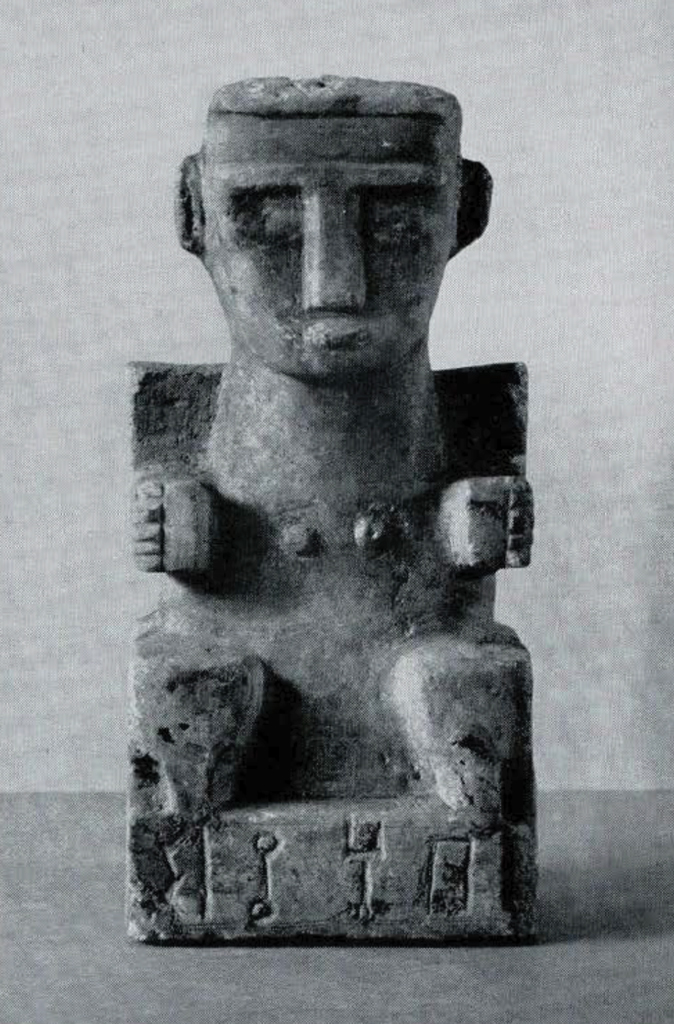
Mr. Watkins liked this bamboo zither from Borneo and said:
In the room where all the musical instruments are stored away, lying flat and still, silenced in dirt and dust, this little contrivance attracted my notice with the click of a sharp mechanical drawing.
I’ve never seen anything of its kind.
I like the sleek vertical design. I like its strength and sinew and its perfect mechanism.
Strips of tough outer bark become strings, keyed out for tension and pitch. The section of the bamboo trunk that is hollow between the joints is used as a sounding box.
The sound delivered is deliciously watery and resonant. One might point out that the only tool needed to make this object was a sharp knife.

He also liked a Sabaean stone figure from South Arabia of the 5th century B.C.
I like this object because it is so naive and yet so lovely. I don’t like to use the word naive, because it is wiser than that. It has simple strength and sharp cutting and I like the squareness from shoulders to base, framing the soft stone fleshiness of the stomach and breasts. None of its squares are copied from nature, all are invented derivatives.
I look at the front of it, I know that I am going to find a flat back, and when I turn to the side, I find no lean area or disagreeable surprises. It all seems in keeping with itself.

And a Guetar figure of the 12th century A.D. found in Costa Rica.
I found this object in a dark corner.
When I touched it, its feel was in keeping, and when I lifted it, its weight was right. Taken to the light, its color and rough patina were satisfactory, and, as I looked at its simple cutting, although I am no stone cutter myself, I felt that I might, had I been allowed the gift of its conception, have been able to make it. So, to a limited extent, I could share the delight of its maker.
But as an observer, attempting to explain the peculiar beauty that I feel latent in these forms, I might point out the delicious sizes as one mounts from the base to the crest and the three lateral, structural intervals between them as the feet, the pelvis and the shoulders, the weighty thickness of the neck, the silent closed-in head, the beat in the repeated sizes of the two massive legs, and the arms and torso, only slightly smaller, in a group of three.
These five columns enclose three intervals, not of emptiness, but of active space.

